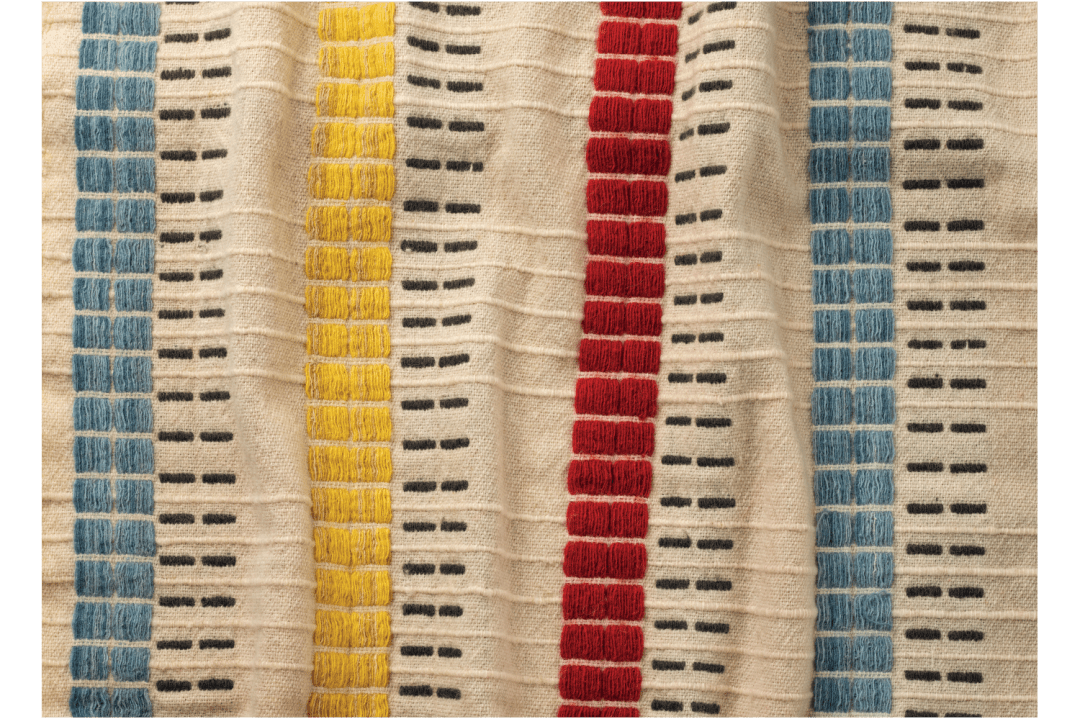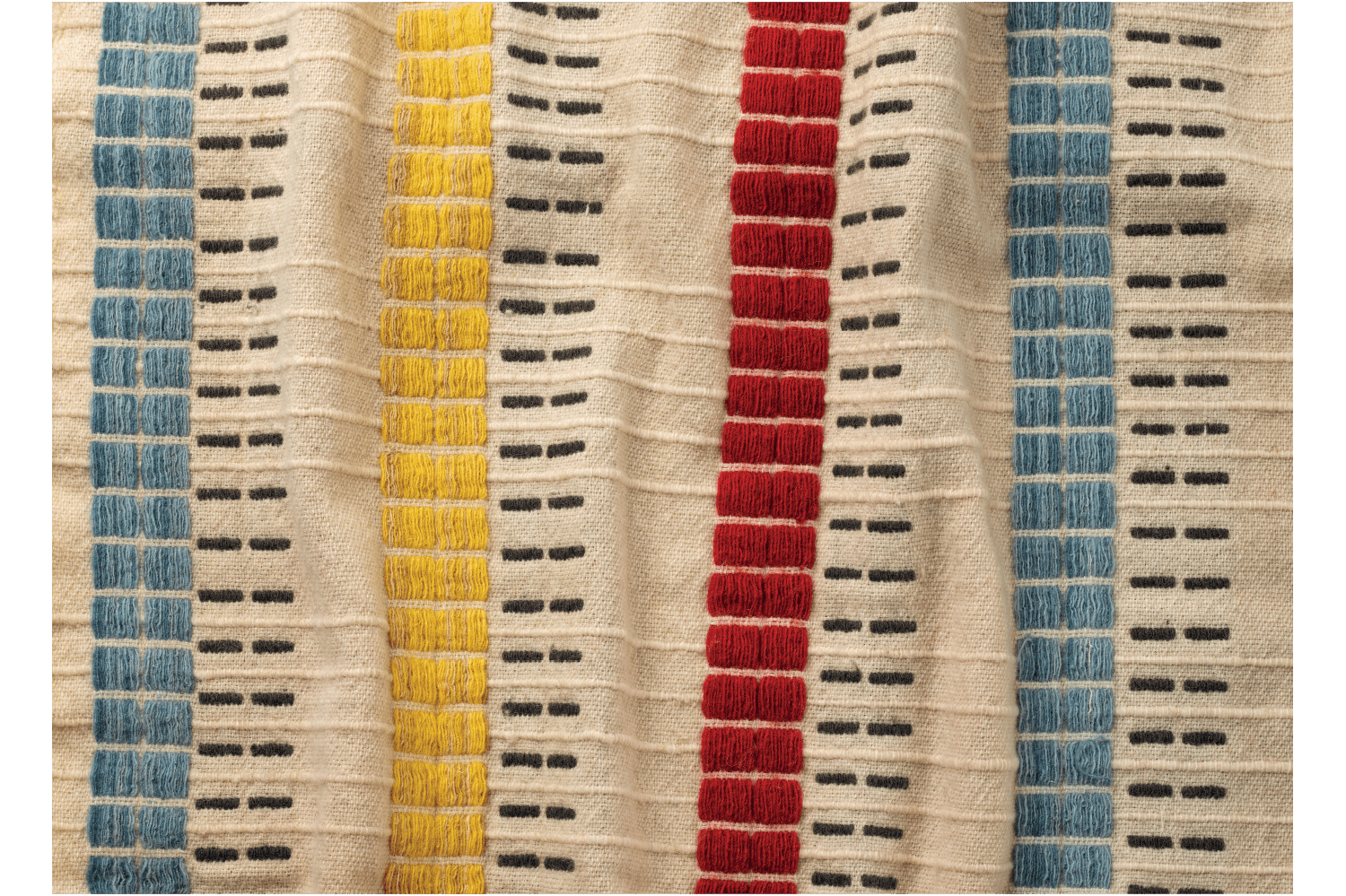The name of Ditchling used to be synonymous with Eric Gill, but since he was outed as an abuser of his own daughters the association has become an embarrassment. Obliged to quietly drop its most famous name, Ditchling Museum of Art + Craft has been exploring less controversial connections. Its latest show, about Bourne and Allen, is a tribute to a forgotten creative partnership that casts a fascinating sidelight on the contribution of women’s traditional crafts – and lesbianism – to British modernism.
After the Festival Hall put them on the map, they were approached to weave the fabrics for Ben-Hur
Hilary Bourne was a Ditchling girl. Sent from India before the first world war to board at Dumbrells School in the East Sussex village where she was later joined by her widowed mother and sisters, she was just 13 when she learned to spin, in 1922, at the Gospels weaving studio of Ethel Mairet, a veteran of Gill’s artistic community. She took up weaving in Palestine, then went to work at Muriel Rose’s Little Gallery off Sloane Street, an emporium of contemporary crafts where ‘every single thing’, remembered the children’s author Lucy Boston, ‘was handmade and violently desirable’.
But it was through her evening job at Westminster Theatre that, in 1936, she met and fell in love with the costume designer Barbara Allen. They moved into a flat together, set up some looms and embarked on a lifelong partnership that was only cut short by Barbara’s death in a hotel fire in 1972.
Their domestic set-up may not sound like a business model to worry the more famous Edinburgh Weavers, founded by men, but Bourne and Allen would become their closest rivals. They were light on their feet and versatile, designing tweeds for Fortnum’s, scarves for Liberty’s and soft furnishings for Swansea College, after their architect friend Sadie Speight – wife of Leslie Martin, who designed the Royal Festival Hall – spotted their natural-dyed yarns hanging in their conservatory.
The success of the Swansea commission led to an invitation to submit designs for handwoven curtains for the 120 boxes at the Royal Festival Hall.









Comments
Join the debate for just £1 a month
Be part of the conversation with other Spectator readers by getting your first three months for £3.
UNLOCK ACCESS Just £1 a monthAlready a subscriber? Log in